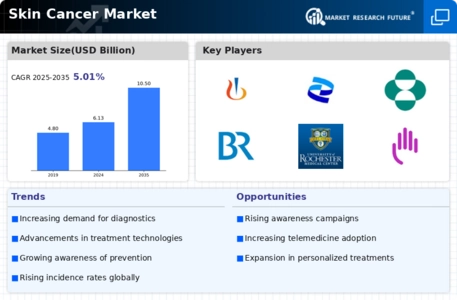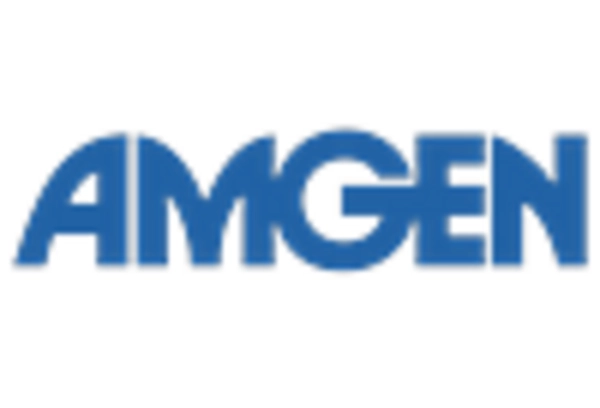Increasing Incidence Rates
The Skin Cancer Market is experiencing a notable surge in incidence rates, particularly among populations with fair skin. Data indicates that skin cancer cases have risen significantly over the past decade, with melanoma being one of the fastest-growing cancers. This increase is attributed to factors such as prolonged sun exposure and the depletion of the ozone layer. As awareness of the risks associated with UV radiation grows, more individuals are seeking preventive measures and treatments, thereby driving demand within the Skin Cancer Market. Furthermore, the World Health Organization has reported that skin cancer is among the most common cancers worldwide, which underscores the urgency for effective solutions and innovations in this sector.
Rising Demand for Preventive Care
The Skin Cancer Market is witnessing a rising demand for preventive care measures. As public awareness of skin cancer risks increases, individuals are more inclined to seek preventive solutions, such as regular skin checks and the use of sunscreen products. This shift in consumer behavior is driving growth in the market for preventive care products and services. Moreover, educational campaigns aimed at promoting sun safety and skin health are gaining traction, further influencing consumer choices. The emphasis on prevention is expected to create new opportunities for businesses within the Skin Cancer Market, as they adapt to meet the evolving needs of health-conscious consumers.
Technological Innovations in Diagnostics
Technological advancements are revolutionizing the Skin Cancer Market, particularly in diagnostic tools and methods. Innovations such as artificial intelligence and machine learning are enhancing the accuracy of skin cancer detection, allowing for earlier diagnosis and better patient outcomes. For instance, dermatoscopes and imaging technologies are becoming increasingly sophisticated, enabling healthcare professionals to identify skin lesions with greater precision. The integration of telemedicine is also facilitating remote consultations, which is particularly beneficial in underserved areas. As these technologies continue to evolve, they are likely to expand the market for skin cancer diagnostics, ultimately improving the overall management of the disease.
Regulatory Support and Policy Initiatives
Regulatory support and policy initiatives play a pivotal role in shaping the Skin Cancer Market. Governments and health organizations are implementing policies aimed at reducing the incidence of skin cancer through public health campaigns and funding for research. For example, initiatives promoting sun safety and skin cancer screenings are becoming more prevalent, which encourages early detection and treatment. Additionally, regulatory bodies are streamlining the approval processes for new therapies, thereby facilitating quicker access to innovative treatments for patients. This supportive environment is likely to foster growth within the Skin Cancer Market, as stakeholders are motivated to develop and deliver effective solutions.
Growing Investment in Research and Development
Investment in research and development is a critical driver for the Skin Cancer Market. Pharmaceutical companies and research institutions are allocating substantial resources to discover new therapies and improve existing treatment modalities. This trend is evidenced by the increasing number of clinical trials focused on novel drug formulations and immunotherapies. According to recent data, the global market for skin cancer therapeutics is projected to reach several billion dollars by the end of the decade, reflecting the potential for lucrative returns on investment. As more stakeholders recognize the importance of innovation in combating skin cancer, the influx of funding is expected to accelerate advancements in treatment options.


















Leave a Comment